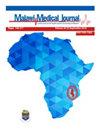Malawi: What are the implications that aspartame is now a “possible carcinogen”?
IF 0.8
4区 医学
Q4 PUBLIC, ENVIRONMENTAL & OCCUPATIONAL HEALTH
引用次数: 0
Abstract
Aspartame is an artificial non-saccharide sweetener 200 times sweeter than sucrose. It is commonly used as a sugar substitute in foods and beverages. Aspartame is a methyl ester of the aspartic acid/phenylalanine dipeptide category. It (aspartame) was approved by the United States Food and Drug Administration (FDA) in 1974. Its approval was revoked in 1980 before being re-instated a year later. It is one of the most studied food additives in the human food supply. Because of its low caloric value, it is often a preferred sweetener when there are concerns of weight gain, an attribute glucose and sucrose do not have (it is an ingredient of many diet drinks and chewing gum), the latter being, among other concerns, obesitogenic and diabetogenic.马拉维:阿斯巴甜现在是一种“可能的致癌物”,这意味着什么?
阿斯巴甜是一种人造无糖甜味剂,比蔗糖甜200倍。它通常被用作食品和饮料中的糖替代品。阿斯巴甜是天冬氨酸/苯丙氨酸二肽类的甲酯。阿斯巴甜于1974年被美国食品和药物管理局(FDA)批准使用。它的批准在1980年被撤销,一年后才恢复。它是人类食品供应中研究最多的食品添加剂之一。由于它的低热量,当人们担心体重增加时,它通常是首选的甜味剂,而葡萄糖和蔗糖没有这种特性(它是许多无糖饮料和口香糖的成分),后者在其他问题中,会导致肥胖和糖尿病。
本文章由计算机程序翻译,如有差异,请以英文原文为准。
求助全文
约1分钟内获得全文
求助全文
来源期刊

Malawi Medical Journal
Medicine-General Medicine
CiteScore
1.50
自引率
0.00%
发文量
27
审稿时长
>12 weeks
期刊介绍:
Driven and guided by the priorities articulated in the Malawi National Health Research Agenda, the Malawi Medical Journal publishes original research, short reports, case reports, viewpoints, insightful editorials and commentaries that are of high quality, informative and applicable to the Malawian and sub-Saharan Africa regions. Our particular interest is to publish evidence-based research that impacts and informs national health policies and medical practice in Malawi and the broader region.
Topics covered in the journal include, but are not limited to:
- Communicable diseases (HIV and AIDS, Malaria, TB, etc.)
- Non-communicable diseases (Cardiovascular diseases, cancer, diabetes, etc.)
- Sexual and Reproductive Health (Adolescent health, education, pregnancy and abortion, STDs and HIV and AIDS, etc.)
- Mental health
- Environmental health
- Nutrition
- Health systems and health policy (Leadership, ethics, and governance)
- Community systems strengthening research
- Injury, trauma, and surgical disorders
 求助内容:
求助内容: 应助结果提醒方式:
应助结果提醒方式:


